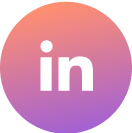
9 min read
Why HR Should Prioritize Employee Health Benefits to Enhance Company Productivity
Employee health benefits aren’t just perks; they’re key drivers of productivity and retention. In this blog, we explore why HR should prioritize wellness programs, how they impact performance, and practical ways to create a healthier, more engaged workforce.
.jpg%3F2025-09-27T10%3A06%3A39.816Z&w=3840&q=100)
In this article
In today's fast-paced business world, the conversation around company success is shifting. We've moved past seeing employees as just cogs in a machine; we now understand they are the very heart of the organisation. But what happens when that heart is strained by burnout, stress, and declining well-being? Productivity stalls, engagement drops, and your best people start looking for the exit. This is where HR can step in not just as a support function, but as a strategic driver of growth. Prioritising employee health benefits isn't just a "nice-to-have", it's a powerful lever for boosting company productivity and building a resilient, motivated workforce. This article explores the critical connection between HR and employee well-being and illustrates how the right health benefits can have a transformative impact on productivity.
Key Takeaways
- Health is a Strategy, Not a Perk: Shift your mindset. Employee health benefits are a core business strategy that directly fuels productivity, engagement, and retention.
- Listen First, Design Second: The most effective benefits are the ones your employees actually want and need. Use feedback to build a program that resonates.
- Think Holistically: Go beyond basic medical insurance. A truly impactful program addresses the whole person, their physical, mental, emotional, and even financial well-being.
- Data Tells the Story: Track metrics like absenteeism, engagement scores, and turnover to demonstrate the clear ROI and VOI of your wellness initiatives to leadership.
- You Don’t Have to Do It Alone: Partnering with a comprehensive wellness platform can simplify administration, boost engagement, and provide the data you need to prove your impact.
Understanding Employee Health Benefits and Their Importance
When we talk about employee health benefits, we're referring to much more than a basic insurance card. Think of it as a comprehensive toolkit designed to support your team's physical, mental, and even financial well-being. This includes everything from traditional health, dental, and vision insurance to more modern offerings like mental health support, telehealth services, wellness programs, and gym memberships.
Why are these health benefits for employees so critical? Because they provide a safety net that allows people to bring their best selves to work. When an employee isn't worried about the cost of a doctor's visit or has access to a therapist to manage stress, they are more focused, present, and loyal. It’s a clear signal from the company that says, "We care about you as a person, not just as a worker." This feeling of being valued is one of the most powerful drivers of retention and engagement.
The Link Between Employee Health and Productivity
.jpg%3F2025-09-27T10%3A09%3A33.244Z&w=3840&q=100)
The connection between employee health and productivity is direct and undeniable. Healthy employees are productive employees; it’s as simple as that. When your team feels physically well and mentally sharp, they have the energy and focus to tackle challenges, innovate, and collaborate effectively. Their morale is higher, contributing to a positive and vibrant workplace culture.
On the flip side, poor health, whether it's a chronic condition or burnout, leads to absenteeism (sick days) and, perhaps more costly, presenteeism. That’s when employees are physically at their desks but are too unwell or distracted to be effective, leading to a significant loss in output. In fact, companies with strong wellness programs have reported seeing up to 28% less sick leave. A thoughtful investment in health benefits has a clear impact on productivity, transforming the well-being of your staff into a measurable competitive advantage for the business.
HR’s Strategic Role in Prioritizing Employee Health Benefits
As an HR leader, you are uniquely positioned to be the architect of a healthier, more productive workplace. Your role extends far beyond administering plans; it's about championing a culture where employee well-being is woven into the company's DNA. You are the strategic link between the needs of the employees and the goals of the business.
This strategic role in championing HR and employee well-being involves several key actions:
- Listening to your people: Use surveys and feedback sessions to understand what health support your employees truly need.
- Designing with purpose: Create flexible and holistic benefit packages that address physical, mental, and emotional health.
- Driving engagement: Communicate the benefits clearly and consistently, with leaders actively encouraging participation.
- Demonstrating value: Measure the impact of your programs to show how they contribute to business objectives like lower turnover and higher engagement.
By taking the lead, you can ensure that your HR strategies for employee health are not just another box-ticking exercise, but a genuine investment in your company’s most valuable asset.
Effective Workplace Health Programs and Wellness Initiatives
The most effective workplace health programs are the ones that feel human-centred, not one-size-fits-all. Gone are the days when a simple gym discount was enough. Today’s top workplace wellness initiatives are holistic, addressing everything from stress management workshops and nutritional guidance to financial wellness seminars and flexible work arrangements.
The benefits of employee health programs are realised when they are:
- Comprehensive: They should cover physical, mental, emotional, and even financial well-being.
- Accessible: Employees should be able to easily find and use the resources, whether it's booking a telehealth appointment in minutes or finding a mental health professional.
- Engaging: Incorporating elements like wellness challenges or rewards can make participation fun and motivating.
To simplify this, many companies choose to work with a strategic partner. A unified platform like Get Visit can serve as a one-stop solution, integrating everything from telemedicine and fitness to customised OPD plans and mental health support, making it easier for HR to manage and for employees to access holistic care.
Measuring the Impact of Health Benefits on Company Productivity
To truly prove the value of your health benefits strategy, you need to speak the language of business: data. Measuring the health benefits' impact on productivity is essential for securing executive buy-in and refining your approach over time.
Start by tracking key metrics that tell a clear story:
- Absenteeism and Presenteeism Rates: Are sick days decreasing?
- Employee Engagement Scores: Do surveys show a rise in morale and job satisfaction?
- Turnover Rates: Are you retaining more of your top talent?
- Benefits Utilization: Are employees actively using the programs you offer?
Beyond the pure Return on Investment (ROI), consider the Value on Investment (VOI), which captures harder-to-measure benefits like improved company culture and employer brand. A great strategic partner can make this easy by providing an analytics dashboard that offers valuable insights, helping you connect the dots between employee engagement and health benefits.
Actionable HR Strategies to Enhance Employee Health Benefits
.jpg%3F2025-09-27T10%3A13%3A17.841Z&w=3840&q=100)
Ready to make a bigger impact? Here are some concrete HR strategies for employee health that you can implement to design, promote, and sustain truly effective employee health benefits programs.
- Start with a Conversation: Don’t assume you know what your employees need. Conduct anonymous surveys and focus groups to gather honest feedback on their current health challenges and what they’d value most.
- Embrace Flexibility and Personalisation: The needs of a recent graduate are different from those of a working parent. Offer a flexible benefits plan that includes mental health resources, telehealth options, and family care services.
- Champion Preventive Care: Go beyond treatment and actively promote prevention. Organise on-site health screenings, offer flu shots, and run educational campaigns on topics like nutrition and stress management.
- Communicate, Communicate, Communicate: You can have the best benefits in the world, but they’re useless if no one knows about them or how to use them. Use multiple channels, email, team meetings, and internal portals to communicate benefits clearly and often.
- Leverage Technology: Modern platforms can streamline the entire process. Look for agile solutions that can be implemented quickly; some can get your team fully onboarded in as little as 72 hours and are flexible enough to be tailored for teams of any size.
Conclusion: The Business Case for Prioritizing Employee Health Benefits
Ultimately, investing in employee health benefits is one of the smartest business decisions a company can make. It’s a direct investment in company productivity, resilience, and long-term growth. When employees feel supported and cared for, they are more engaged, innovative, and committed to the company's mission. By championing comprehensive well-being, HR leaders can build a thriving workplace culture where both employees and the business can flourish. The question is no longer if you should prioritise employee health, but how you can start doing it today.
Frequently Asked Questions (FAQs)
1. What exactly are employee health benefits and why do they matter so much now?
Employee health benefits are a range of services provided by an employer to support the overall well-being of their workforce. This can include health insurance, mental health support, fitness programs, and more. They matter more than ever because a healthy, supported workforce is a productive one. In a competitive market, great benefits show you care, helping you attract and keep the best talent.
2. How direct is the link between employee health benefits and our company's productivity?
It's incredibly direct. When employees have access to care, they take fewer sick days and are more focused and motivated at work. Addressing issues like stress and burnout early on prevents them from escalating into larger productivity problems, directly impacting your company's performance and bottom line.
3. As an HR professional, what is my most important role in this process?
Your most important role is to be a strategic champion for employee well-being. This means assessing your team's needs, designing programs that meet those needs, fostering a culture that encourages participation, and then measuring the impact to align these initiatives with the company's overall business goals.
4. We have a limited budget. What types of workplace health programs give the most bang for our buck?
Effective doesn't always mean expensive. Start with holistic and accessible options. Programs that integrate mental health resources (like EAPs), offer convenient telemedicine, promote preventive care, and provide flexible work arrangements often have the highest impact on well-being and work-life balance.
5. What are the biggest challenges in implementing a new benefits program, and how can we avoid them?
The most common hurdles are managing costs, driving employee engagement, and proving the program's value. You can overcome these by tailoring benefits to what employees have asked for, communicating clearly and enthusiastically, and leveraging technology. A partner like Get Visit can help streamline implementation, manage the program efficiently, and provide the analytics to demonstrate its success.
"Take control of your health today - book your check-up with Visit Health and get personalized insights instantly."
See how Visit makes it happen








